| Along the old haul
road, we see present day erosion cutting down through unconformities resulting
from the past erosion and the following deposition. These rocks are from
the Torrey formation. |
 |
| An old erosional surface
can be seen as a wavy line of pebbles on the face of the road cut. Again
the main body is part of the Torrey formation. |
 |
| A closer view of this
road cut shows a younger stream filled channel cutting through the pebble
lined unconformity. |
 |
| A much closer view
of an old stream filled channel with its course sediments stands out from
the old sandstone stream bed. |
 |
| Evidence of past faulting
in the San Dieguito area shows a graben centered between two horsts. |
 |
| A closer view shows
the foot wall and the hanging wall of a normal fault. The rock is part
of the Torrey formation with the typical cross bedding seen. |
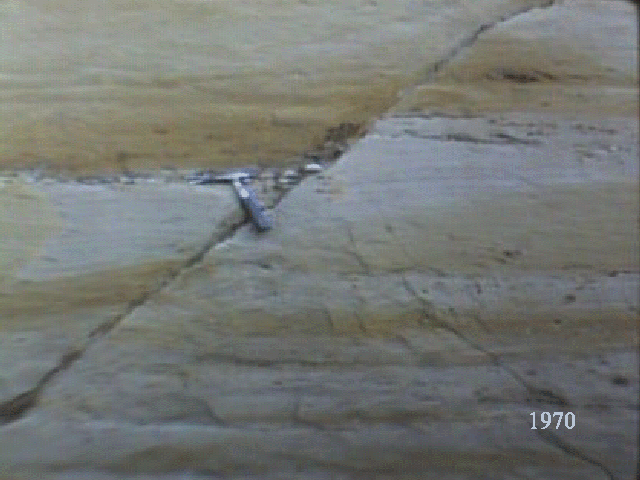 |
| More faults in the
sandstone rock of the Torrey formation are seen east of Encinitas. Following
the pebble line the typical basin and range topography of the Eastern Sierras
is seen in miniature. |
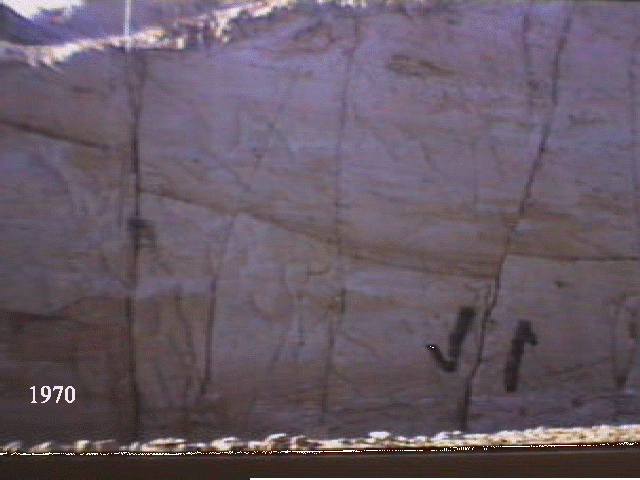  |
| A close up shows the
nearly vertical fault line with the resulting offset of rock to the right
and left. |
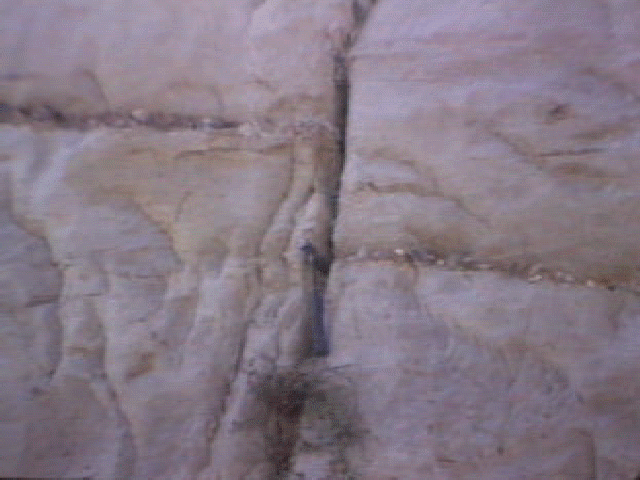 |
| The green sandstone
and mud stone of the Del Mar Formation is seen along the Green Valley on
the way to the Calaveras Plug area. |
 |
At the Calaveras Plug,
the resistant conduit of an extinct volcano shows good columnar jointing
and the resulting columns. |
  |
| A cross section of
one of the broken columns found on the talus pile at the base of the plug
shows the characteristic six-sided columnar joint pattern |
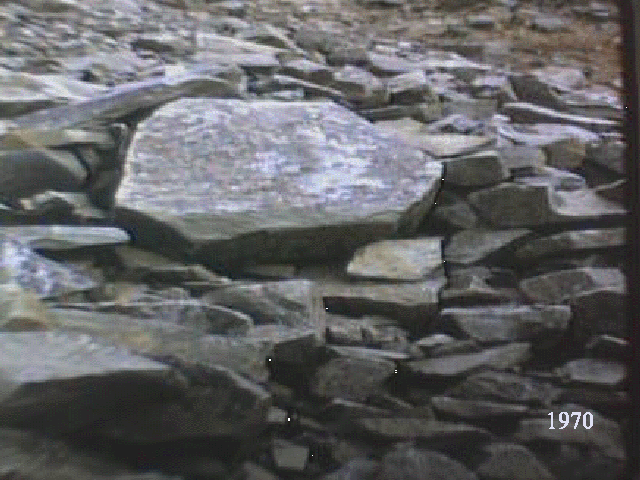 |
| Devils Tower in Wyoming
and |
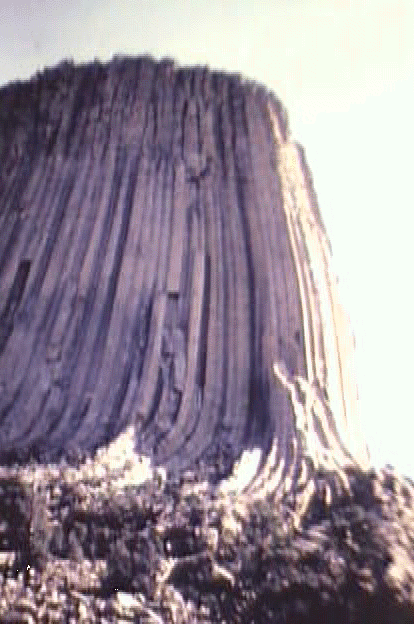 |
| Devils Post Pile near
Mammoth mountain in California are two classical examples of volcanic structures
showing columnar jointing. |
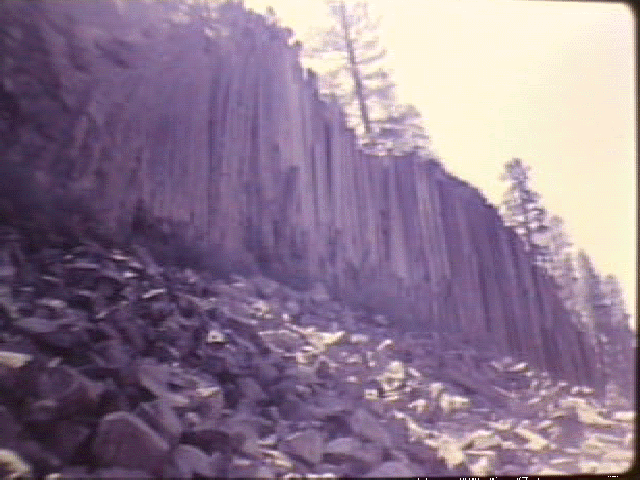 |
| Looking from the columns
towards the right a light red colored contact zone can be seen separating the
conduit and the surrounding country rock |
 |
| A closer view shows
the dacite igneous rock of the plug, the metamorphosed rock of the contact
zone, and the surrounding country rock. |
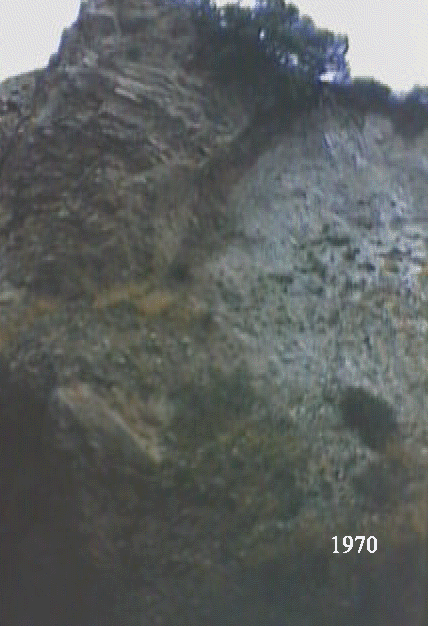 |
| An exploratory mine
shaft dug into the hillside at the Calaveras Plug area. In volcanoes of
this type many economic minerals are sometimes found. |
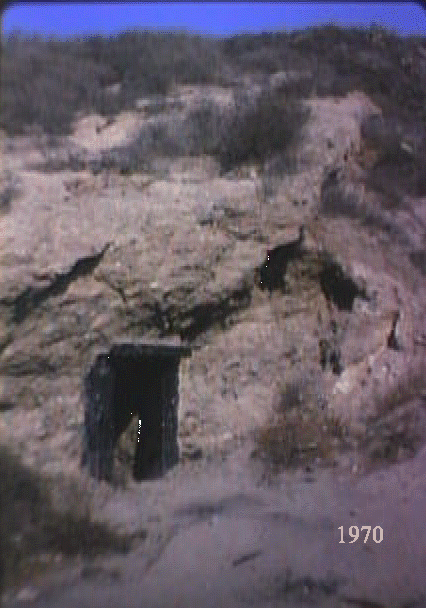 |
| A good view of the
interesting patterns found in the rock seen inside the exploratory mine
shaft |
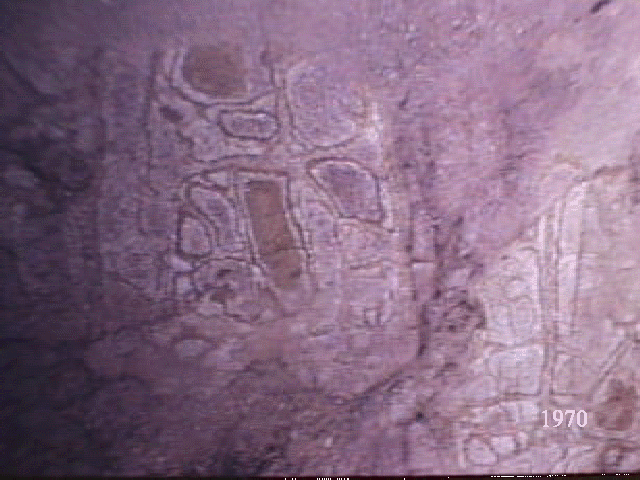 |
| Closer view of the
rock. Some believe that this is the result of the weathering of the
dacitic rock of the plug, |
 |
| At one time few miles
east of Rancho Santa Fe, a mineral called pyrophyllite was mined.
Southern California Volcanic Mountains can be seen in the background. |
 |
| A close up of
evidence of past mining for pyrophyllite (used in the production
of insecticides) is shown here (homes now occupy this area to the east
of the SDG&E right of way.) |
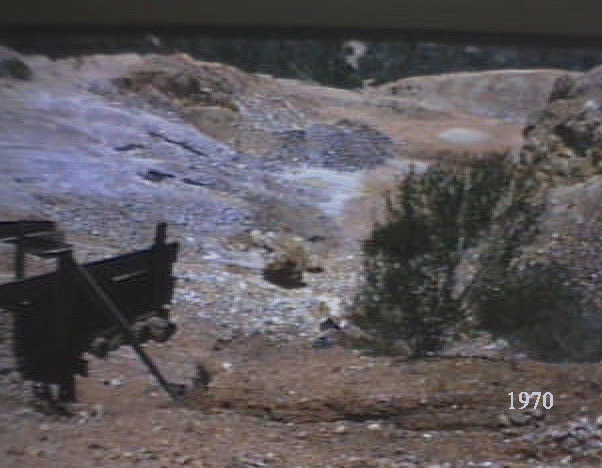 |
| The characteristic
color and plate like structure of pyrophyllite can be noted in lower portion
of this picture. It's texture is reminicent of the colored rock at Calaveras
plug. |
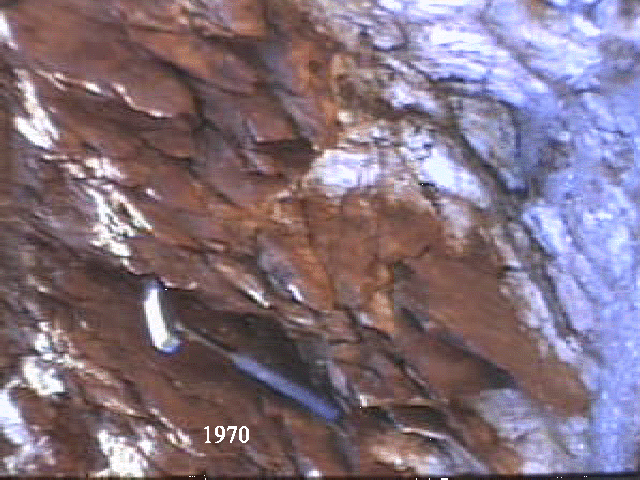 |